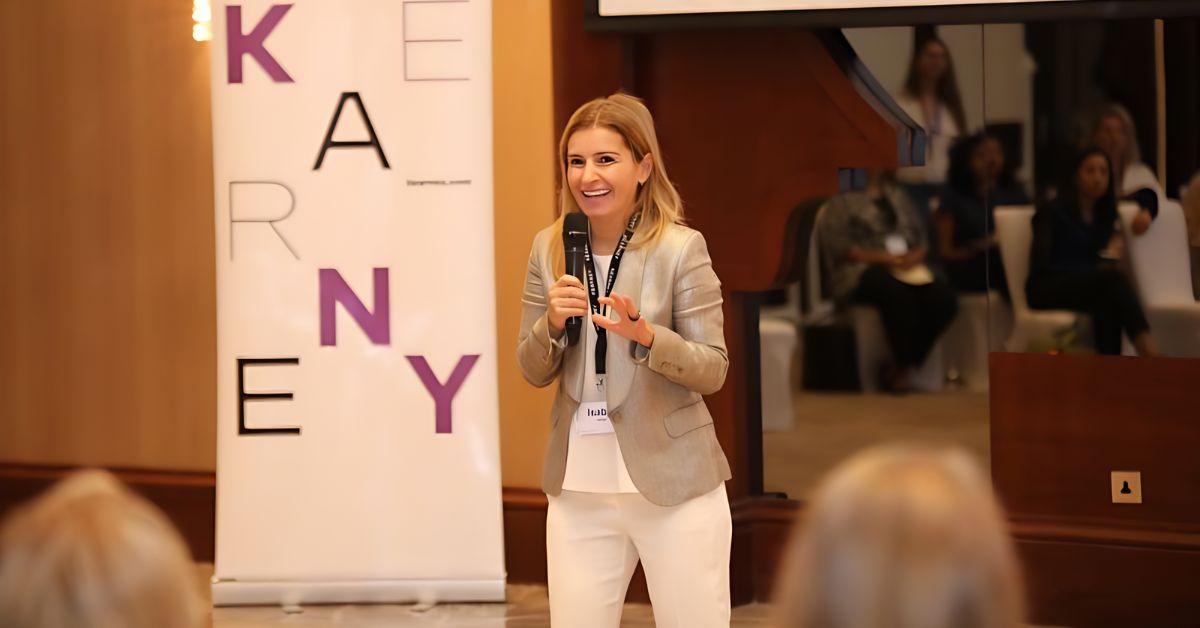DUBAI — Despite progress in women’s education and workforce participation, the Arab region continues to grapple with significant gender disparities. These inequities are evident in various spheres, including economic opportunities, political representation, and access to resources. Traditional social norms and cultural barriers often hinder women’s full participation and advancement, exacerbating existing inequalities.
New technologies have the potential to disrupt entrenched gender norms and catalyze positive change. From digital platforms to artificial intelligence (AI) and blockchain, innovative technologies offer opportunities to address gender disparities by enhancing access to education, employment, healthcare, and financial services.
“Technology is crucial to women’s economic advancement and can, without a doubt, support the narrowing of the gender gap through many avenues,” says Isabel Neiva, Partner and Practice Lead at Transactions and Transformations Practice, Kearney Middle East & Africa.
According to her, these avenues include education, allowing access to formal and informal learning; health and well-being by reaching support and resources; work, employment, and entrepreneurship opportunities and an increase in productivity; leisure with opportunities to connect with peers across the world.
The GCC, for instance, has made significant progress in women’s participation in the workforce over the last few years. As an example, a recent study by the World Bank ranked Saudi Arabia as the top reformer and the top improver among 190 countries, with women now making up 37 percent of the workforce, compared to 20 percent in 2018.
Technology is crucial to women’s economic advancement and can, without a doubt, support the narrowing of the gender gap through many avenues.
Isabel Neiva of Kearney Middle East & Africa
Policies and national initiatives promoting an inclusive and balanced work landscape have been key to driving increased female participation in the workforce and within leadership positions – and the good news is that women continue to be at the forefront of national priorities, with women’s participation in the workforce remaining a key pillar of national visions among the GCC, such as in Saudi Arabia’s Vision 2030.
However, despite these successful examples, Neiva pointed out that the Arab region still lacks gender parity. For instance, in the 2023 World Gender Gap report, the MENA region remains the furthest from parity, with a 62.6 percent parity score. Economic and political insecurities, discriminatory social norms, laws, and practices hinder women’s advancement and are at the heart of gender inequality.
Challenges and Opportunities
Recognizing the challenges is essential. Women’s participation in the labor force is limited due to factors such as a lack of education, cultural norms, and social barriers. However, the region’s internet and mobile technology penetration presents enormous potential.
According to a 2023 PwC report on digital inclusion in the MENA region, women make up 60 percent of internet users, and 65 percent believe technology helps them find jobs and earn money.
Neiva notes numerous examples where technology has aided women (in both developing and developed countries) in increasing productivity, launching new entrepreneurial ventures, and gaining access to employment opportunities, among other benefits.
“We need to start with internet access, which is a game changer in many areas, and more recently, video conference technology, which is another great example,” she said.
She added that it remains to be seen whether remote working, largely enabled by video conferences, will support the path to gender parity. There might be concerns, such as a potential promotion penalty.
However, in the short term, it allows women more flexibility by combining work with family caregiving responsibilities, reducing the need for career breaks after maternity leave and other similar situations, and providing access to previously inaccessible jobs.
The fact that women are 26 percent more likely than men to apply for remote jobs (according to a 2021 LinkedIn study) underscores the importance of technology.
On the other hand, despite significant progress in closing the gap, several challenges remain.
The digital divide is a critical issue, Neiva emphasizes, noting that women generally do not have equal access to digital technologies. Even when they do, women tend to use fewer services or technologies.

“Many factors contribute to this, including literacy, social roles, and cultural norms, as well as solutions designed with a ‘default’ male user in mind. It is thus critical to consider women’s unique needs, incorporate their perspectives and experiences, and collaborate with women when designing, implementing, and measuring programs and policies,” she said.
Moreover, Neiva highlights that the underrepresentation of women in the STEM field is often cited as a limiting factor for gender parity, especially in an increasingly digital world. In the US, for instance, women make up no more than 35 percent of all STEM graduates. In Europe, there are twice as many male graduates in STEM studies as female graduates. However, this is not the case in Arab countries – particularly in the GCC – where up to 57 percent of all STEM graduates are women, according to UNESCO.
Neiva emphasized that the investment in shaping the future and maintaining the path to gender equality is already in place. It is now crucial to leverage this educational advantage in the workplace.
At present, poor awareness of what a STEM career entails, cultural bias against working in mixed-gender environments, and a lack of female role models remain limiting factors. However, this situation is expected to change; for example, consider the Hope Probe mission in the UAE, where women comprise 80 percent of the mission’s scientists.

